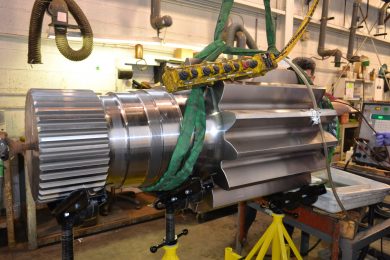Gears are a crucial part of many machines, and if they wear and corrode beyond repair then it can be a costly expense to replace them.
Repairs can be needed at 2 different stages: manufacturing and MRO.
During the manufacturing stage, despite all the modern machining centers, parts can end up mismachined, whether that’s in the bore, the teeth or the shaft. The extent of these dimensional defects is usually small, but the cost of remanufacturing the entire part would be prohibitive.
When in operation, gears are often subjected to harsh environments, with wear and tear from corrosion or day-to-day running in dusty conditions in being common problems.
With small gears, the capital cost of replacing these components in many cases will be tolerable. However, in larger equipment, such as in earth moving, industrial, or marine machinery, it is not just the capital outlay that maintenance engineers must factor in. Not only is the capital cost of larger gears much higher, but there is also the downtime from taking machines out of service that can make the true cost of replacing these components extraordinarily high.
Indeed, downtime is one of the biggest costs that any business can face. In Britain, the impact of machine downtime is costing manufacturers more than £180bn every year (The Manufacturer). The study, conducted by Oneserve, found that 3% of all working days are lost annually in manufacturing due to faulty machinery. 83% of those surveyed also said that they replace machines at least once a year, no doubt carrying huge financial implications and operational costs to do so.
With that said, it is crucial that maintenance costs are kept down, machinery components like gears can be kept in service as long as possible, and if needed, they can be repaired quickly and effectively.
Brush plating, or selective electroplating, is one proven cost-effective way of building gears back to their original specification and help extend their life.
Brush plating, or selective electroplating, is one proven cost-effective way of building gears back to their original specification and help extend their life.
Plating can serve a variety of purposes such as a localized defect repair or bringing an inside diameter (ID) or outside diameter (OD) back to size. Plating can also enhance wear or corrosion resistance exactly where it is needed, even on new parts where it would be prohibitive to make the entire part from a more resistant material.
When assessing parts for repair, it is always important to consider the size and location of repair required, and how much material needs to be plated, as this will determine whether selective plating is appropriate or not.

 Chinese (Simplified)
Chinese (Simplified)  English (UK)
English (UK)  French
French  German
German  Spanish
Spanish  Swedish
Swedish 
